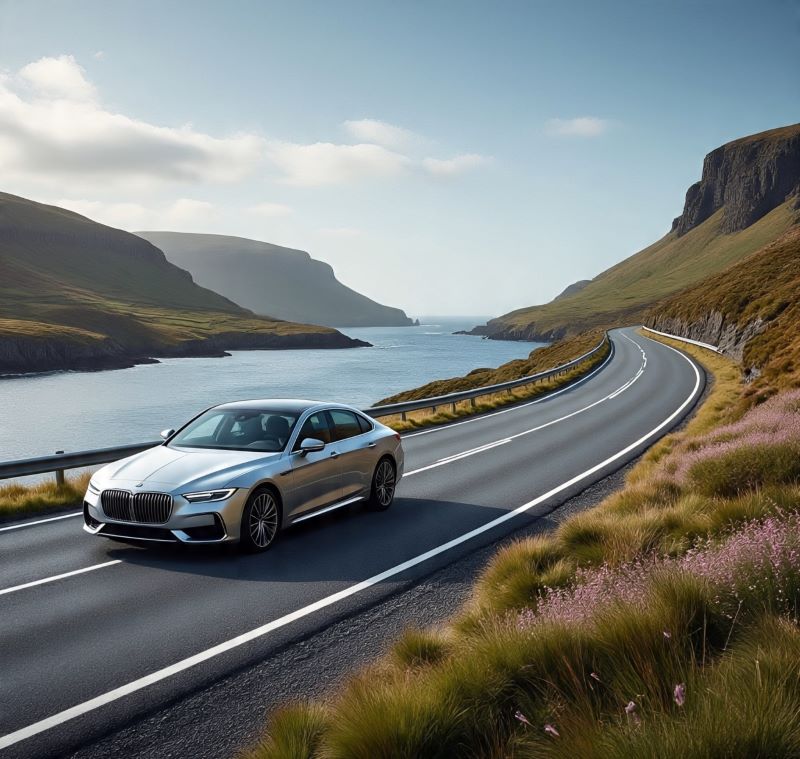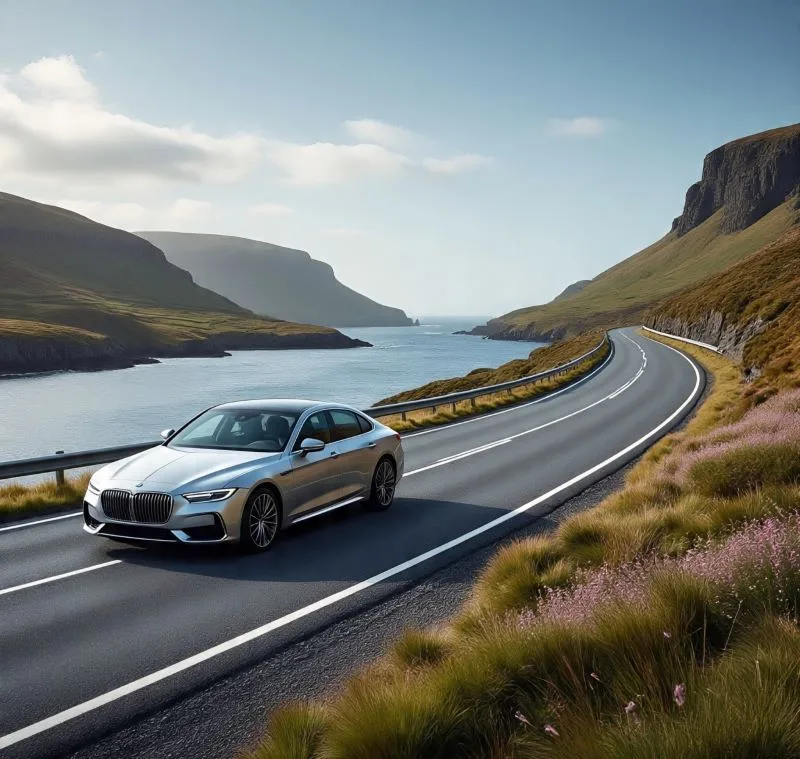Monday, July 21, 2025

The North Coast 500 and Its Growing Impact on the Scottish Highlands
The North Coast 500 (NC500) has rapidly become one of Scotland’s most iconic travel routes, drawing visitors eager to experience the wild beauty of the Scottish Highlands. Stretching across 516 miles, this scenic drive offers a journey through some of the country’s most remote and breathtaking landscapes. Yet, the route’s popularity has led to challenges that were not initially anticipated, causing both local communities and nature to feel the strain of overtourism. What was once a quiet corner of Scotland is now dealing with congestion, environmental degradation, and safety issues, all of which are reshaping the character of the region.
The Rise of the NC500
Launched in 2015 by the North Highland Initiative, the North Coast 500 aimed to bring economic growth to the northern Highlands—a region that had long been overlooked by mainstream tourism. Branded as Scotland’s Ultimate Road Trip, the route promises travelers an unforgettable adventure through a mix of charming villages, historic landmarks, and stunning natural vistas. The journey starts and ends in Inverness, the Highland capital, looping through some of Scotland’s most rugged and unspoiled terrain.
From the moment it was introduced, the NC500 garnered incredible interest. Within its first year, tourism centers in the region saw a 26% increase in visitors. By the third year of its existence, local attractions along the route reported a 30% boost in foot traffic. By 2018, studies revealed that the NC500 had pumped over $31 million into the region’s economy. International travelers, particularly from the United States, flocked to the Highlands, especially after the pandemic, cementing the NC500’s status as a must-do road trip for anyone seeking an adventure off the beaten path.
The Unforeseen Side Effects
While the economic impact has been overwhelmingly positive for local businesses, the explosion in tourist numbers has also brought its fair share of problems. What was once a tranquil landscape is now grappling with traffic congestion, pollution, and a noticeable decline in quality of life for local residents. Many have found themselves overwhelmed by the constant stream of vehicles, especially motorhomes, cars, and motorbikes that frequently disrupt the otherwise serene environment.
Take Susanne Ramacher-Schmitz, a resident of the small village of Laid, for example. She moved to the Highlands in 2020, seeking a quiet life surrounded by nature. However, during the peak tourist seasons, the quiet village was overrun by the noise and chaos of tourists. The steady flow of passing motorbikes and racing cars soon turned her peaceful haven into a busy thoroughfare. She described the situation as an “invasion”, a sentiment shared by many who had settled in the region for its tranquility.
Other locals have voiced similar concerns. Susan Black, a resident of Kinlochbervie, mentioned how the influx of tourists has made daily activities, like walking her dog, a stressful experience. Visitors leaving litter and even human waste in public spaces have become a recurring issue. Many residents feel unprepared for the rapid growth of tourism and are questioning whether the economic gains are worth the negative impact on their community’s environment and social fabric.
The Environmental Strain
The natural beauty that the NC500 promises to showcase is, ironically, being threatened by the very tourism it attracted. Fragile ecosystems are suffering, especially in areas like Drumholistan near Melvich, which is home to a large colony of Atlantic puffins. In an attempt to get a closer look at the birds, tourists have trampled over sensitive peatlands, causing long-term damage to the ecosystem. The increasing foot traffic has not only harmed wildlife habitats but has also hindered local access to key areas, making it harder for residents to move around freely.
One of the most dangerous parts of the NC500 is Bealach na Bà, a notoriously narrow and steep mountain road, often cited as one of the most dangerous in the UK. With the influx of large motorhomes and tourists unfamiliar with the treacherous terrain, accidents have become more frequent, and road fatalities have spiked, especially among foreign visitors. The high number of American tourists traveling along the route has prompted authorities to issue safety warnings and issue educational campaigns aimed at improving road safety.
Local Business Impact
While local businesses have certainly benefited from the influx of tourism, there are growing concerns about the sustainability of these economic gains. Many small businesses, especially those offering holiday rentals, have become heavily reliant on the NC500’s success. A holiday rental owner in Wick stated that without the NC500, their business would not survive. However, many locals feel that these economic benefits come at a significant social and environmental cost.
One such example is Robin Pettigrew, a resident of Lochcarron, who witnessed a surge in reckless driving and disrespectful behavior among tourists. Car rallies, illegal parking, and speeding became commonplace along the route. In addition, motorhome drivers have been seen dumping waste into public drains, and some tourists have gone as far as cutting down trees to use as firewood. While business owners have seen financial benefits from the increase in visitors, many residents feel that the disruption and environmental damage outweigh the profits.
Efforts Toward Sustainable Tourism
Recognizing the challenges posed by increasing tourism, the North Highland Initiative has initiated several projects to make the NC500 a more sustainable and responsible route. One such project is the Press Pause campaign, which encourages communities to have more say in how their areas are marketed and helps manage the flow of visitors more effectively. Local voices are being heard as the initiative seeks to rebalance tourism by creating a more controlled, thoughtful approach to the NC500’s promotion.
The Highland Council has also taken steps to mitigate the impact of tourism by employing a team of 18 rangers who patrol the route. These rangers focus on educating visitors about the importance of responsible tourism—from proper waste disposal to respecting local wildlife and adhering to local regulations. Their presence helps ensure that tourists are aware of the delicate balance between enjoying the area and preserving it for future generations.
In addition to these local efforts, NC500 Ltd., the body responsible for promoting the route, has launched a visitor pledge. This pledge encourages tourists to engage in more mindful behaviors, including respecting local communities, supporting small businesses, and minimizing their environmental impact. Over 4,000 people have signed the pledge, though concerns over road safety, particularly involving inexperienced drivers, remain a priority for both authorities and locals.
A Global Perspective: Balancing Tourism with Sustainability
The challenges facing the NC500 are not isolated. Around the world, popular tourist destinations are grappling with similar issues related to overtourism. As the global travel industry rebounds post-pandemic, it faces the daunting task of balancing economic growth with sustainable practices. The rapid increase in the number of tourists visiting once-remote destinations has led to overcrowding, environmental degradation, and safety concerns that threaten the long-term viability of these areas.
For the tourism industry, the rise of overtourism highlights the need for more responsible travel. Visitors must recognize their role in preserving the destinations they explore, adopting practices that respect local cultures, reduce environmental impact, and promote the well-being of local communities.
Ultimately, the success of the NC500, and similar routes worldwide, hinges on creating a balance between the economic benefits of tourism and the preservation of both natural resources and local communities. It is essential that travelers, businesses, and authorities work together to ensure that the beauty and charm of these iconic destinations are not lost in the rush to see them. The NC500’s future will depend on its ability to evolve into a model of sustainable tourism, where both locals and visitors can enjoy the journey without sacrificing what makes these places special.







